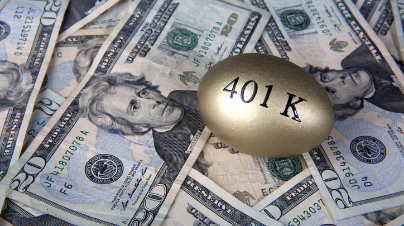The 401(k) retirement plan is a popular savings vehicle for many American workers. It offers significant tax advantages, allowing employees to contribute a portion of their pre-tax salary into the account and grow their savings without taxes until retirement. However, there may be circumstances where you might need to access your 401(k) funds early. This brings up the question: Can you close out a 401(k) account while still employed? Let’s explore this topic and understand how to access 401(k) funds early.
Can You Close Out Your 401(k) While Still Employed?
In most cases, the simple answer is no; you cannot close out your 401(k) account while still employed by the company that sponsors it. This rule applies if you’re under the age of 59½, which is considered the retirement age for most plans. The main reason behind this restriction is that a 401(k) plan is designed as a long-term savings tool for retirement, not as an easily accessible savings account.
However, there are exceptions to this rule depending on your plan’s rules and regulations. Some plans may allow in-service withdrawals or loans under certain conditions.
Understanding In-Service Withdrawals
In-service withdrawals are one way to access your 401(k) funds early while still employed. They allow an employee to withdraw money from their account before reaching the age of 59½ without facing the standard early withdrawal penalty of an additional 10% tax.
However, not all plans offer in-service withdrawals and those that do often have strict rules about when and how much can be withdrawn. These rules vary from plan to plan but typically require that you have reached a certain age (usually between 55-59½) or have been with the company for a specific number of years.
It’s also important to note that while in-service withdrawals avoid the early withdrawal penalty, they are still subject to income tax. Therefore, taking an in-service withdrawal should be considered carefully and as a last resort.
401(k) Loans: Another Way to Access Funds Early
Another option for accessing your 401(k) funds early is through a 401(k) loan. This allows you to borrow against your 401(k) balance and repay the loan with interest over time. The maximum amount you can borrow is typically the lesser of $50,000 or half of your vested account balance. Check with your Plan Administrator or HR Department.
While this can provide immediate access to funds, it comes with risks. If you fail to repay the loan on time, it will be treated as a distribution and subject to taxes and potentially early withdrawal penalties. Additionally, if you leave or lose your job while the loan is outstanding, the remaining balance may become due immediately. Understand the tax consequences of not repaying a 401(k) loan when you leave your ex-employer.
Hardship Withdrawals: A Last Resort
If you’re facing severe financial hardship and have no other resources available, you might be able to make a hardship withdrawal from your 401(k) account. The IRS defines hardship as an “immediate and heavy financial need.” This could include expenses such as medical bills, tuition fees, preventing foreclosure or eviction, burial expenses, or repair damages to your primary residence.
However, hardship withdrawals are subject to income tax and may also incur an additional 10% early withdrawal penalty if you’re under age 59½. They should only be considered as a last resort due to their potential impact on your long-term retirement savings.
Conclusion
While it’s generally not possible (or advisable) to close out a 401(k) account while still employed without facing penalties or taxes, there are exceptions based on specific circumstances such as in-service withdrawals, loans or hardship withdrawals. It’s crucial that before making any decisions about accessing your 401(k) funds early that you understand all the implications involved including potential tax liabilities and impact on your future retirement savings. Always consult with a financial advisor or tax professional to help guide you through these complex decisions.



